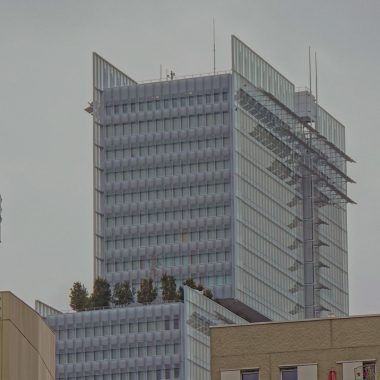Launched in the US in 2016, TikTok has quickly become the go-to social network among 13 to 24-year-olds. In France, no less than 57% of 16 to 18-year-olds use the platform! Popular with the younger generation but sometimes criticized for its content moderation and personal data management, TikTok unites but also divides.
Last summer, the app launched a new content creation campaign, #LearnOnTikTok, and has recently announced that it will fund the VIRAL series from NowThis, signalling a new educational approach for TikTok aimed at drawing in a whole new audience. The app is moving beyond pure entertainment and is venturing into the youth education sphere, with content that is both educational and recreational. Is this an opportunity to restore its reputation?
Educational content, TikTok’s new initiative
Particularly popular with Generation Z, TikTok initially thrived on viral content, giving free rein to users’ creativity and spearheading new musical, comedy or dance trends. It proved to be genuinely “covid-proof”, with downloads exploding during the first lockdown.
TikTok is now tackling educational content. Launched in June 2020 and addressing the consequences of the health crisis, the platform’s #LearnOnTikTok project has 800 million users and one of its aims is to help young people keep learning at a time when schools are closed. The app, which has been criticised for the supposed frivolity of its content for younger users, wants to become a social network that can combine entertainment and learning.
The #LearnOnTikTok initiative has proven successful with 40 billion views, but it is still in its infancy. Last November, the company launched a specific “Learn” tab to promote its hashtag, which brings together all the videos with an educational purpose to be broadcast to its community. There are DIY videos, advice on how to practice yoga or arrange flowers, as well as information about endangered marine life and tips on how to solve a mathematical formula in record time.
On 15 April, TikTok launched a new series called VIRAL, in partnership with the American media company NowThis, which combines interviews with public health experts and question and answer sessions with users. This dynamic, interactive initiative in keeping with the app’s image has been a huge success with the TikTok community, and NowThis is now the most followed new media on the app, with 4.6 million subscribers. By creating useful, educational content that also has a public interest dimension, TikTok is taking a new turn that has not gone unnoticed by politicians.
Have politicians fallen under the spell?
Between the fight against Covid-19 and the approach of the French presidential elections, politicians have been enthusiastic adopter of these new social media platforms to help them speak to and interact with the younger generation, like Gabriel Attal with his show #SansFiltre on YouTube and Twitch, or Emmanuel Macron’s interview with McFly and Carlito. Social media has become central to politicians’ PR strategies, to help them connect with and be heard by young voters.
TikTok is no exception. In response to requests to combat fake news circulating on the platform relating to the pandemic, TikTok has launched a “COVID-19” tab, which includes a set of “official” videos to provide accessible information on how the virus is transmitted, vaccinations and the importance of preventative measures.
Supporting content creators is crucial for social media
But TikTok’s strategy has a second objective: to support content creators by ensuring that they are paid. TikTok is positioning itself as a platform that cares about content creators’ economic situation, because it knows that creators are fuelling its business model.
By Joanne Rouhier, Junior Consultant at Antidox










